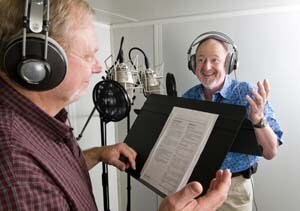Recent Episodes

Since blood donors are in short supply and donated blood only lasts 40 days, scientists have for a century tried to find a human blood alternative.
In the 1870s, milk was explored as a substitute. Much later, perfluorocarbon was tried for its stability and ability to absorb oxygen in the lungs, but it had too many side effects.
Today, some researchers are focused on hemoglobin, an ingredient in the blood that gives blood cells their color. The red molecule binds oxygen and distributes it throughout the body.
So far, the most promising study uses recycled hemoglobin from a blood bank’s expired blood, and here’s how it works. Around ten thousand copies of hemoglobin protein are placed inside a lipid sac, resembling a mini-red blood cell. Inside are also molecules called 2,3-DPG that make the cell-like capsules responsive to changes in pH. This means they respond differently to acidity or alkalinity. At the high pH inside the lung, 2,3-DPG interacts with hemoglobin increasing its ability to bind oxygen.
In other tissues and organs, where the pH is low, the 2,3-DPG is released which causes the hemoglobin to release oxygen into those tissues. This mimics how our red blood cells work naturally.
These engineered hemoglobin sacs are compatible with all blood types, don’t need refrigeration, and have a shelf life of 2 years. So far, animal testing is going well and the next step is human clinical trials.
More Information
There will be blood
Is mimicking the cells that carry hemoglobin the key to a blood substitute?
Artificial Blood: The History and Current Perspectives of Blood Substitutes
Blood transfusions are one of the most common procedures performed in hospitalized patients. Yet, despite all of the measures taken to ensure the safety of the blood supply, there are known risks associated with transfusions, including infectious and noninfectious complications. There is a need to develop alternative agents that can reliably and safely replace blood. However, although there have been many attempts to develop blood substitutes over the years, there are currently no such products available that have been approved by the United States Food and Drug Administration (FDA)

Medicine...
Medicine is constantly advancing – that is a great thing about life in the 21st century. But it doesn’t just happen. Dedicated biomedical scientists are making discoveries that translate into those new medical advances.
Biomedical science is broad, encompassing everything from social science to microbiology, biochemistry, epidemiology, to structural biology and bioinformatics to name just a few areas. And, it can involve basic fundamental biology, the use of AI and chemistry to clinical studies that evaluate new medicines in patients.
No matter the research focus, the goal is always the same, to advance human health. It may take a few months, a few years or for fundamental science, a few decades. Few people make the connection that biomedical science is medicine and that biomedical scientists are working today on the medicine of tomorrow. Our weekly 500-word newspaper columns and 2-minute radio shows and podcasts provide insights into a broad range of biomedical science topics.
Medical Discovery News is dedicated to explaining discoveries in biomedical research and their promise for the future of medicine.





